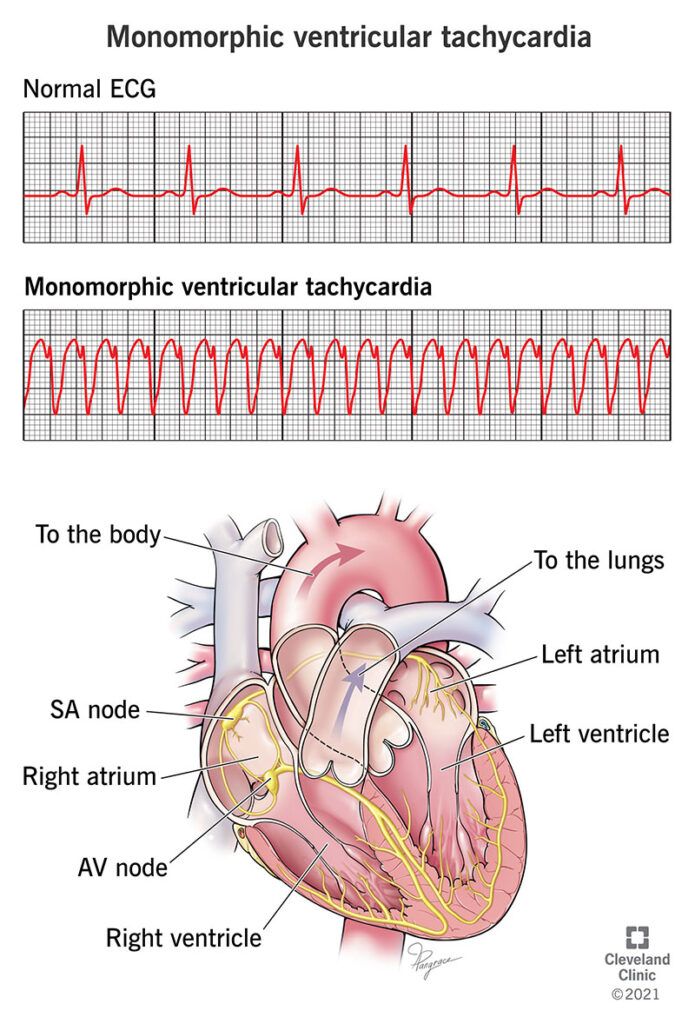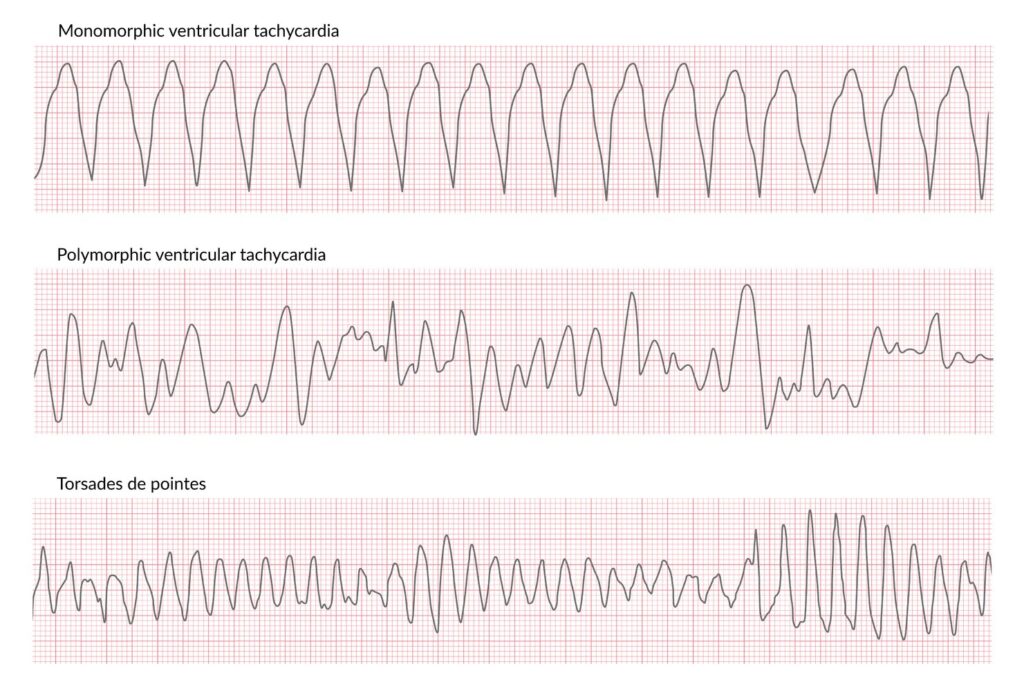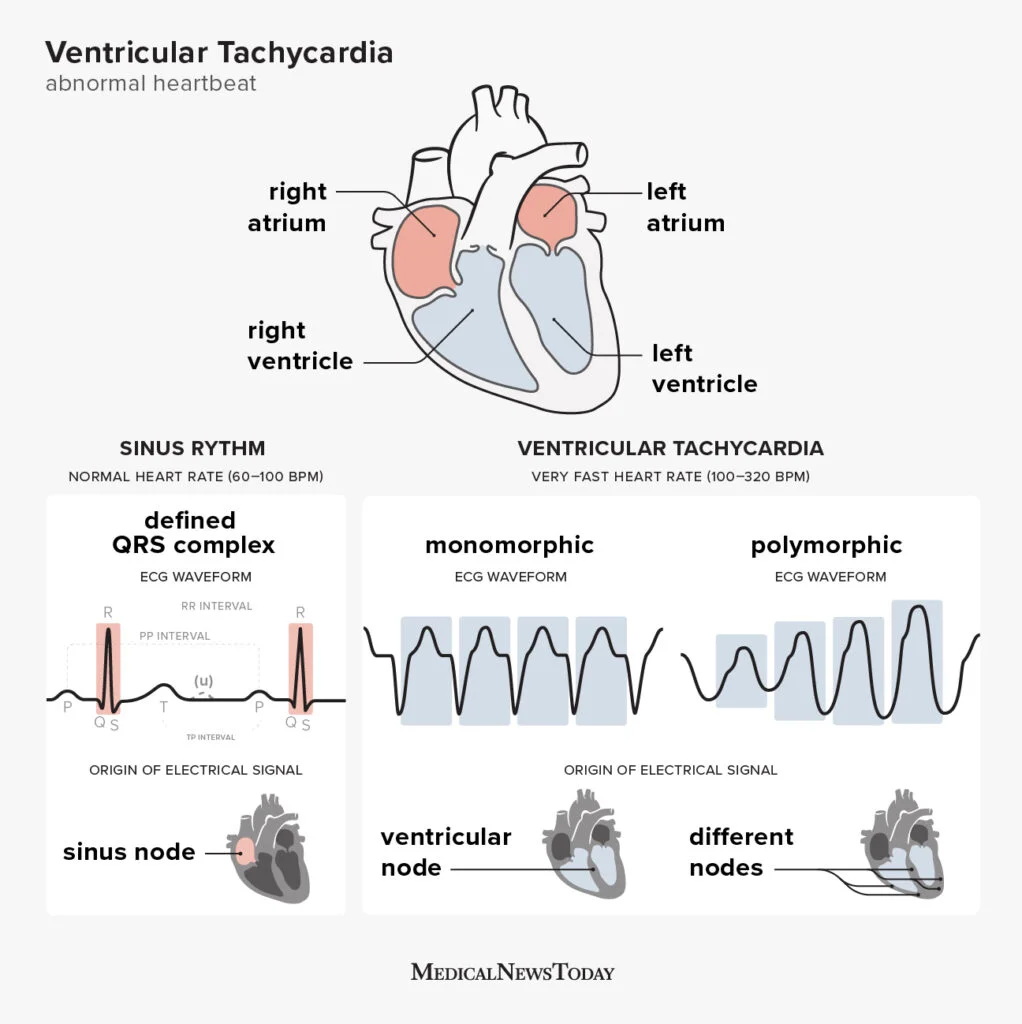
Monomorphic Ventricular Tachycardia
Monomorphic ventricular tachycardia (VT) is a type of cardiac arrhythmia characterized by a rapid and regular heart rate originating from the ventricles. Unlike polymorphic VT, where the heart rhythm is irregular, monomorphic VT presents with a consistent and uniform pattern. This article aims to delve into the various aspects of monomorphic ventricular tachycardia, including its causes, symptoms, diagnosis, and available treatment options.
Causes of Monomorphic Ventricular Tachycardia
Monomorphic ventricular tachycardia often arises due to abnormal electrical signals originating from the ventricles of the heart. Several factors can contribute to the development of this condition, including:
- Heart Disease: Underlying heart conditions such as coronary artery disease, myocardial infarction (heart attack), and structural heart abnormalities can increase the risk of monomorphic ventricular tachycardia.
- Scar Tissue Formation: Areas of scar tissue within the heart, often resulting from previous heart surgeries or injuries, can disrupt the normal electrical conduction system and lead to the development of ventricular tachycardia.
- Cardiomyopathies: Conditions affecting the heart muscles, such as hypertrophic cardiomyopathy or dilated cardiomyopathy, can create an environment conducive to ventricular arrhythmias.
- Electrolyte Imbalances: Abnormal levels of potassium, sodium, or calcium in the blood can affect the heart’s electrical activity and trigger monomorphic ventricular tachycardia.
- Certain Medications: Some medications, particularly those that prolong the QT interval, may increase the risk of ventricular arrhythmias.

Symptoms of Monomorphic Ventricular Tachycardia
The symptoms of monomorphic ventricular tachycardia can vary from person to person and may include:
- Palpitations: A rapid and forceful heartbeat that is noticeable to the individual.
- Dizziness or Lightheadedness: Insufficient blood flow to the brain during episodes of ventricular tachycardia can lead to feelings of dizziness or lightheadedness.
- Syncope (Fainting): In severe cases, reduced blood flow to the brain during prolonged episodes may cause a person to lose consciousness.
- Chest Pain: Some individuals may experience chest discomfort or pain during episodes of monomorphic ventricular tachycardia.
- Shortness of Breath: Inadequate blood pumping to the rest of the body can lead to shortness of breath, especially during physical activity.
Diagnosis of Monomorphic Ventricular Tachycardia
The diagnosis of monomorphic ventricular tachycardia involves a combination of clinical evaluation, medical history review, and diagnostic tests. Key diagnostic tools include:
- Electrocardiogram (ECG or EKG): This non-invasive test records the electrical activity of the heart and can identify the characteristic pattern of monomorphic ventricular tachycardia.
- Holter Monitor: A portable ECG device worn for an extended period, usually 24 to 48 hours, to capture intermittent episodes of ventricular tachycardia.
- Event Recorder: Similar to a Holter monitor, but worn for a more extended period, an event recorder is used to record the heart’s electrical activity during symptoms or when triggered by the individual.
- Electrophysiological Study (EPS): Invasive testing involving the insertion of catheters into the heart to map the electrical pathways and identify the origin of the abnormal rhythms.

Treatment Options for Monomorphic Ventricular Tachycardia
The choice of treatment for monomorphic ventricular tachycardia depends on factors such as the frequency and severity of episodes, underlying health conditions, and the presence of symptoms. Treatment options include:
- Antiarrhythmic Medications: Medications such as amiodarone, sotalol, or lidocaine may be prescribed to help regulate the heart’s rhythm and prevent episodes of ventricular tachycardia.
- Catheter Ablation: A minimally invasive procedure where catheters are guided to the heart to deliver radiofrequency energy, creating scars that interrupt the abnormal electrical pathways causing ventricular tachycardia.
- Implantable Cardioverter-Defibrillator (ICD): For individuals at high risk of life-threatening ventricular arrhythmias, an ICD may be implanted to monitor and deliver shocks to restore normal heart rhythm when necessary.
- Lifestyle Modifications: Adopting a heart-healthy lifestyle, including regular exercise, a balanced diet, and avoiding triggers such as excessive alcohol or stimulant intake, can contribute to the management of monomorphic ventricular tachycardia.
Conclusion
Monomorphic ventricular tachycardia is a serious cardiac arrhythmia that requires prompt diagnosis and appropriate management. With advancements in medical technology and treatment options, individuals with this condition can lead fulfilling lives. It is crucial for those experiencing symptoms or at risk of ventricular tachycardia to seek medical attention, as early intervention can significantly improve outcomes and reduce the risk of complications. Regular follow-up with healthcare providers and adherence to prescribed treatments are essential components of managing monomorphic ventricular tachycardia effectively.
